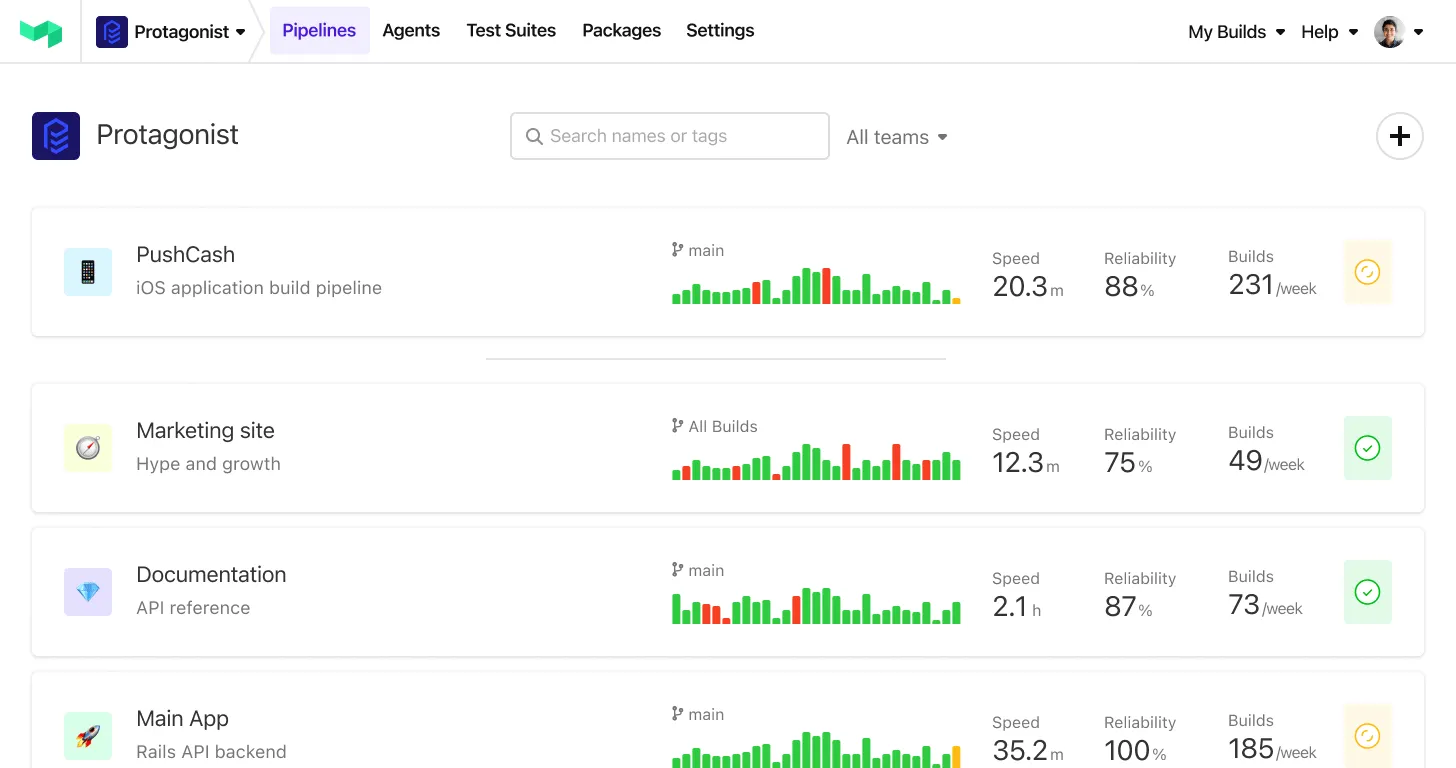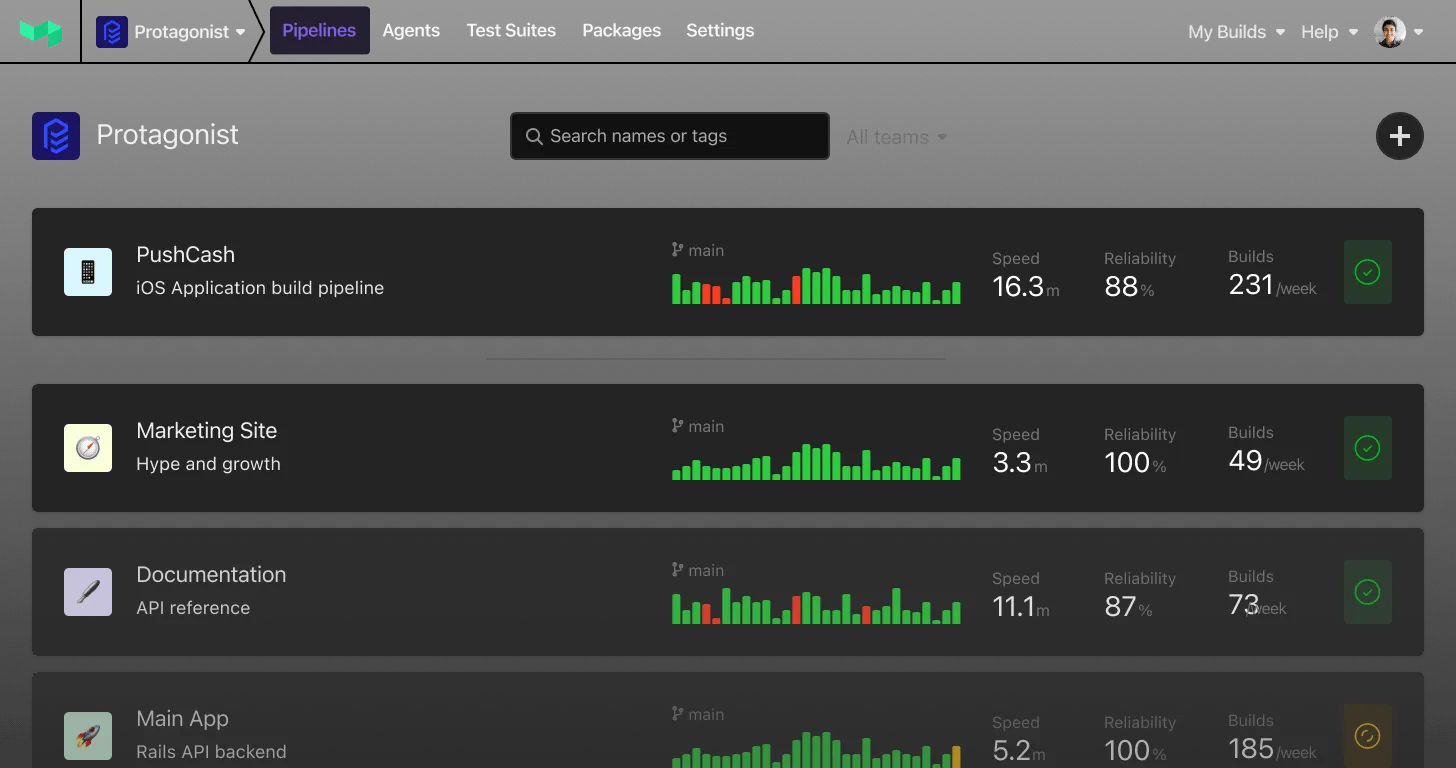Better visibility of missing dependencies
You can now view missing dependencies in job rows. This allows you to quickly debug your pipeline configuration while the build is running or after it fails.
When a build is running, and a job has a dependency that doesn't exist yet, you'll see the following message:

You can expand the job row to see the names of the missing dependencies:
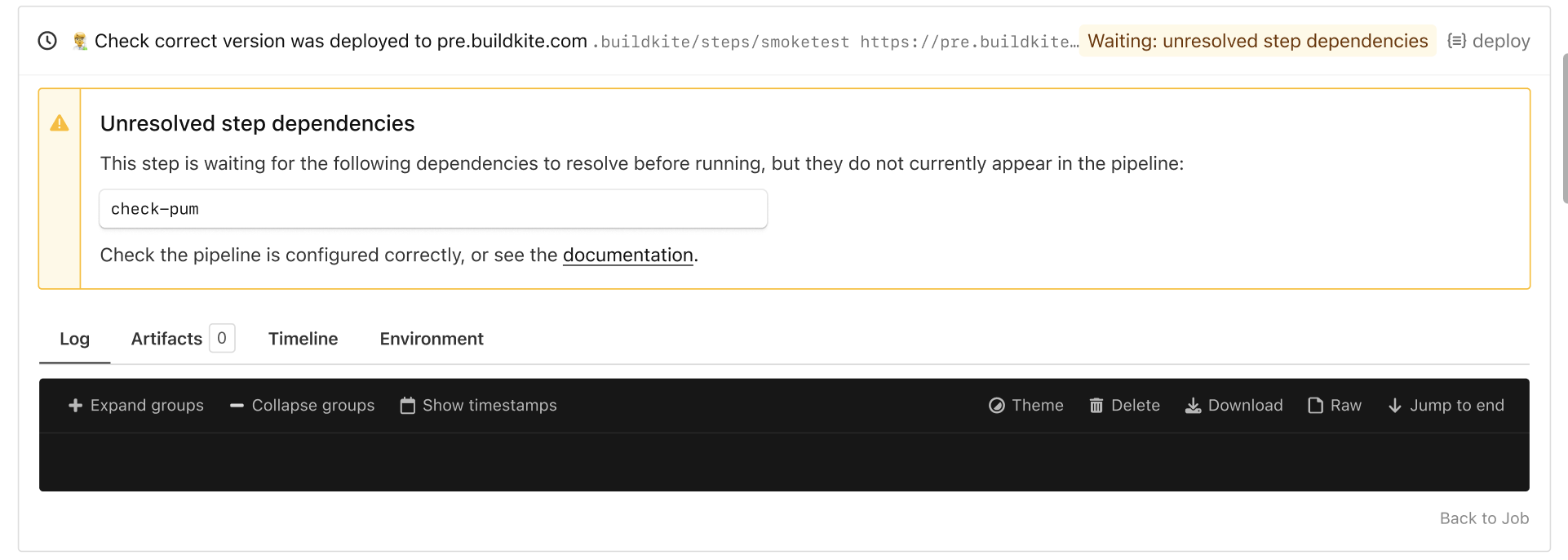
If the step dependency is not resolved and the build fails, you'll see an error message:

When you expand the job row, you'll see the names of the missing dependencies:

Liam
Support for line breaks in block and input steps
You can now add line breaks to your block and input steps in Buildkite Pipelines. For example, see the prompt and hint fields in the following pipeline definition:
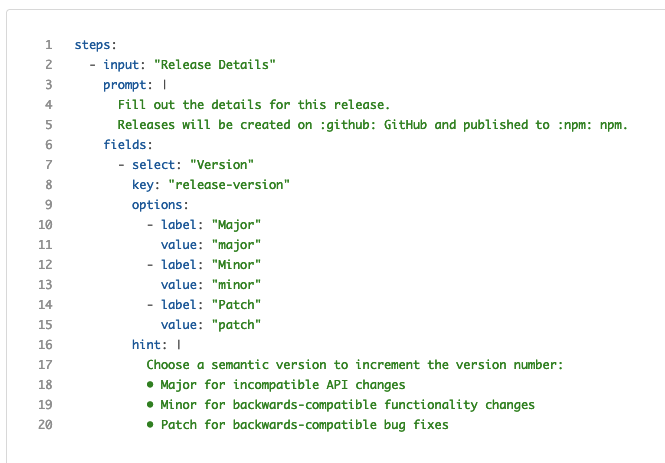
These fields are displayed in the UI as follows:
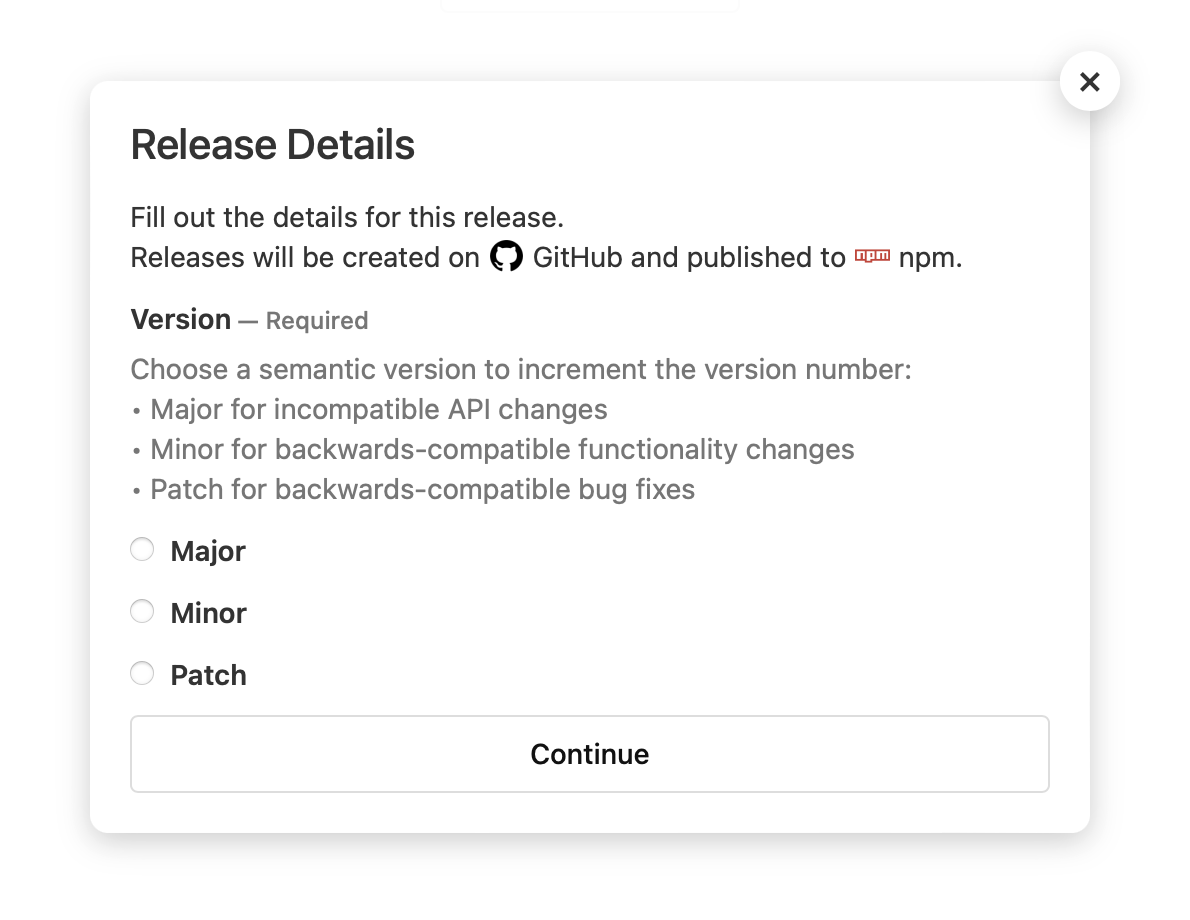
Liam
UI improvements for links and long commands on jobs
When viewing jobs, the links to agent and queue details now take up less space, and you can see the full command on hover when it's truncated.
A recent change added links from jobs to agent and queue details, but the links took up a significant portion of the job row. We've made the links more compact so you can see more of the job name and command while keeping direct links to the agent and queue details:

When a longer job command is truncated, you can now see the full command on hover:

Liam
Linking to jobs from waterfall view
The waterfall view has been updated to help you debug builds faster.
You can now go directly from a job in the waterfall view:

To its log output:

Liam
Clusters Generally Available
Clusters is a Buildkite feature used to manage and organize agents and queues, which:
- allows teams to self-manage their Buildkite agent pools,
- allows admins to create isolated sets of agents and pipelines within within a single Buildkite organization,
- helps make agents and queues more discoverable across your organization,
- gives you more control over your agents and queues like pausing them, and
- provides easily accessible queue metrics.
All existing agents can now be accessed through Unclustered grouping on the agents page.
Liam
Lower Agent Timeouts
We have reduced agent timeouts from 5 minutes to just 3 minutes, and improved the lost agent cleanup service from 5 minutes to 1 minute! This enhancement offers significant benefits to our customers, particularly those utilizing spot instances for their agents.
With shorter timeouts, jobs now fail faster when spot instances can't compete on price, slashing the time it takes for pipelines to detect and recover from failures from 10 minutes to just 4 minutes. This means faster feedback loops, streamlined pipelines, and ultimately, accelerated development cycles.
Oz
REST API Rate Limit Changes
Today, we updated our REST API rate limits. This update will improve performance, enhance security, and ensure fair usage.
For more information on rate limits please consult our documentation.
Himal
Docs updates to Pipelines landing page, GraphQL cookbook, and visual style
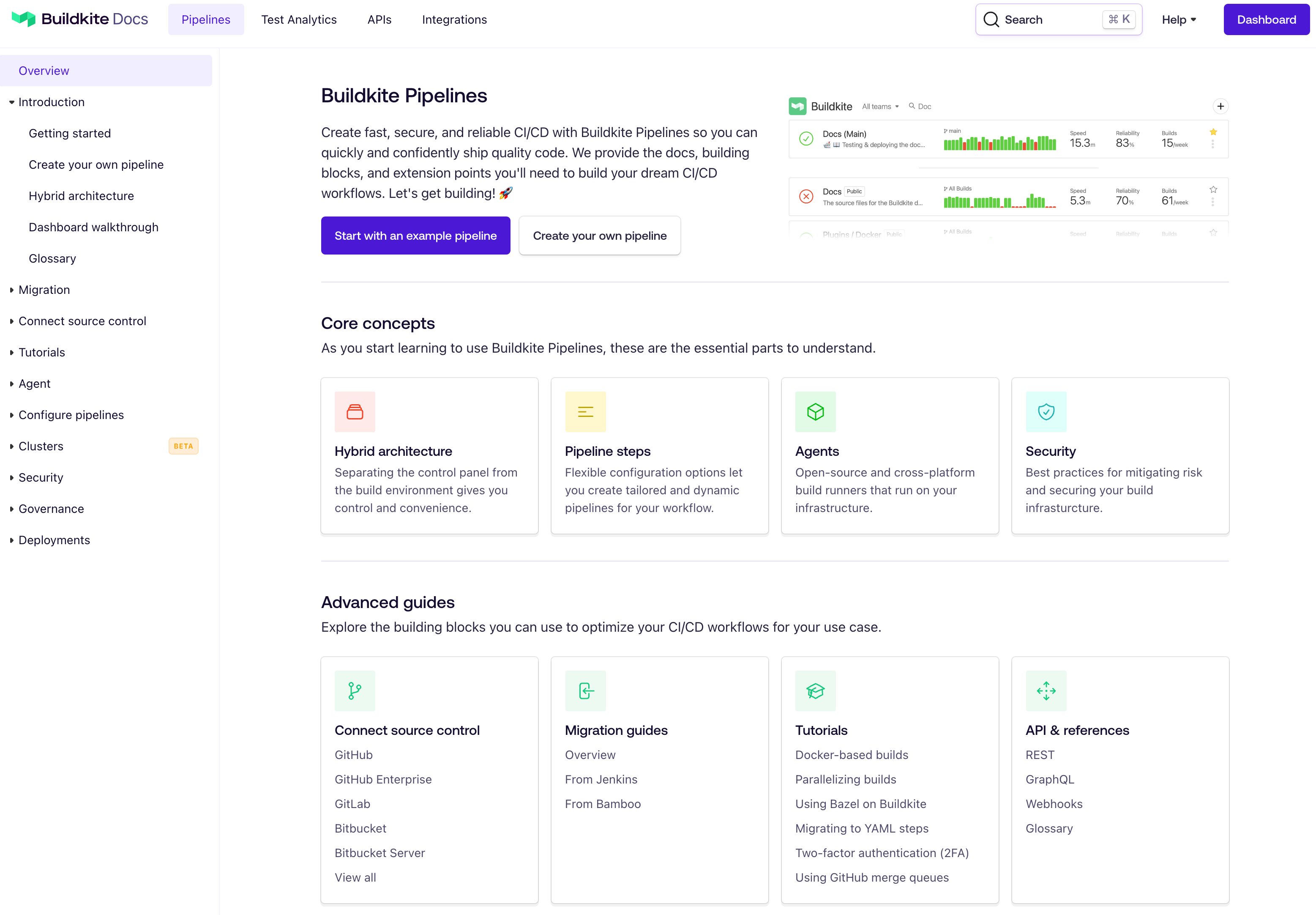
- Creating a new landing page for Pipelines. This helps distinguish the product from the feature and provides clearer entry points for new users.
- Adding a dedicated page to describe Pipelines' hybrid architecture.
- Highlighting H3s when scrolling on a page.
- Splitting the GraphQL cookbook into multiple pages to make it easier to navigate.
- Updating the search component.
- Applying general style updates across the site, from typography and tables to page layout and spacing.
And many more small changes. See the documentation to check them all out. ✨
Michael
Enforce edit permissions check when accessing pipeline provider webhook URLs
Pipeline edit permissions are now required to view pipeline.provider.webhook_url. If the user does not have the correct permissions, a blank string will be shown in place of the webhook URL.
This change will also affect webhook payloads containing pipeline data. To ensure the greatest level of security, pipeline.provider.webhook_url will no longer be visible in these payloads.
Laura
Single Organization Access Tokens
Starting today, newly created API Access Tokens will only access one organization. This update aims to enhance organizations' security by simplifying access token management. Administrators should be aware that tokens cannot be modified to include their organization after they have been originally created.
This change only affects newly created tokens. All existing tokens will remain unaffected by this change; however, existing tokens will not be able to add any additional organizations to their scope.
James
GraphQL Rate Limits
Buildkite has introduced new rate limits for the GraphQL API.
This update will improve performance, enhance security, and ensure fair usage across the Buildkite platform.
Please read the documentation to learn more about the GraphQL rate limits, specifically how to check your current usage:
James
Agent Tokens Removed from Buildkite UI after Creation
Effective from 24 July 2023, agent tokens in the Buildkite UI will undergo a significant modification. They will now behave similarly to API tokens, meaning that after creation, they will no longer be visible in the UI.
To ensure you have access to the complete token, it is crucial to save it immediately upon creation. This change aims to enhance the security of agent tokens within the Buildkite platform.
Please make a note of this update and adjust your workflows accordingly. If you have any questions or concerns, feel free to reach out to our support team (support@buildkite.com) for assistance.
Oz
Access Token Notifications
Buildkite has implemented additional security notifications to keep your data safer.
Security notifications empower customers to promptly address any token changes made to their accounts, ensuring data security and preventing unauthorised access.
Users will now receive an email when they create or update an access token associated with their account.
James
Important Update to Terraform Provider
We're removing support for Import of agent tokens in the Terraform provider. This change coincides with the announcement in this changelog. From 4 July 2023 onwards, any resources or data-sources which are dependent on an agent token being present will likely fail to apply.
We recommend that you update your provider version to >=0.19.0. Any version below this will run a state refresh on the next Terraform operation and cause agent tokens in state to be set to nil, "". If these changes are then deployed, there is a risk that all agents in your organisation will have their tokens removed and no longer be able to connect to Buildkite.
Oz
New Security settings section
We've introduced a new 🔒 Security section under Settings for all security related features.
Moving all security related controls into the same space will make them easier to find and manage.
You'll find:
- Security contact
- Permissions settings
- Pipelines permissions
- Test Analytics permissions
- API access allowlist
consolidated in this new page: https://buildkite.com/organizations/~/security
Jason
Docs home page redesign
We've redesigned the documentation home page to make getting to the content you want easier.
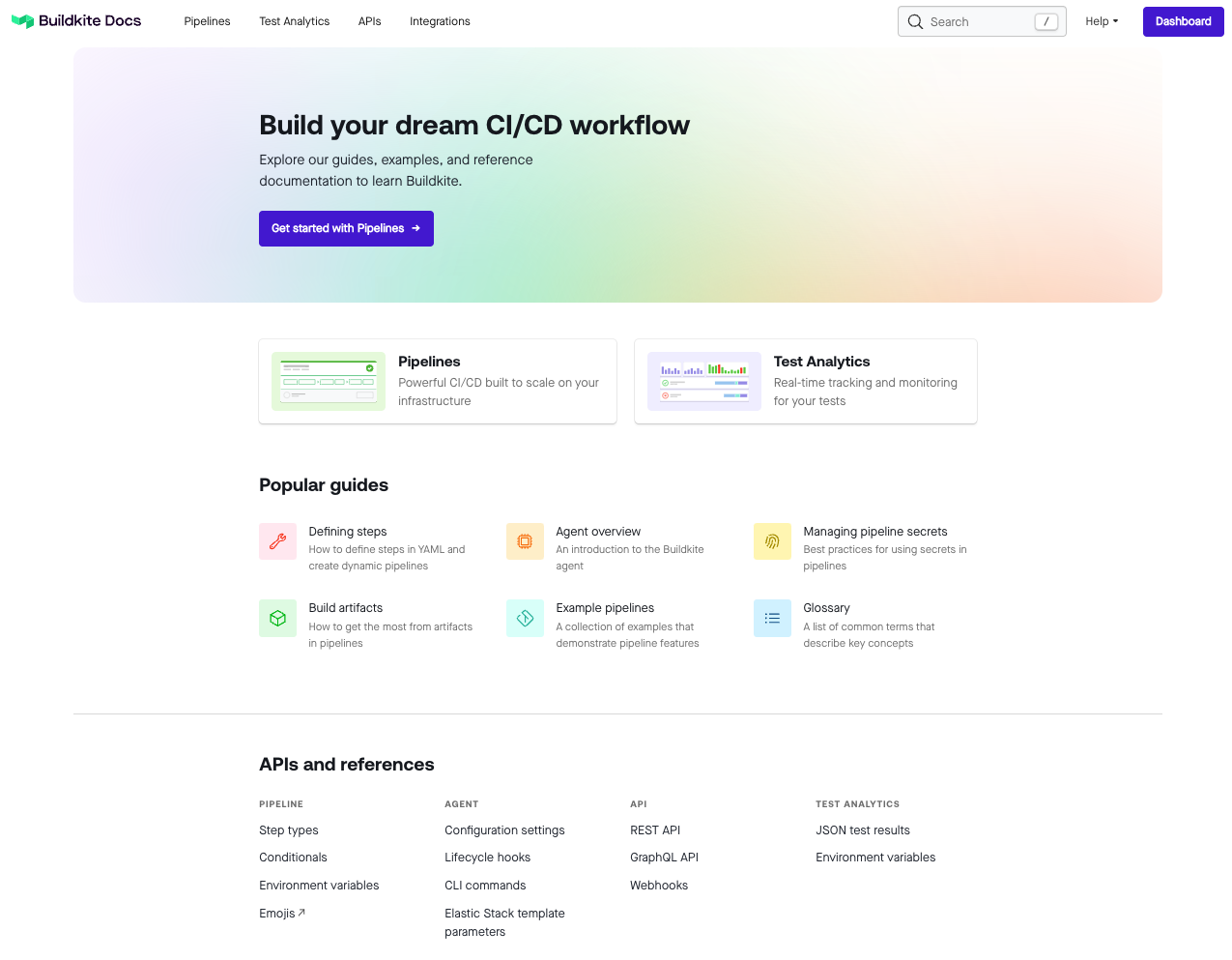
Notice:
- A clearer path to get started for new users.
- Quick access to popular content for everyone.
- Links to look up reference data for experienced users.
- A consistent global navigation to make jumping to the section you want easier.
See Buildkite docs to check it out! ✨
Michael
Elastic CI Stack for AWS docs restructure
We've restructured the documentation for the Elastic CI Stack for AWS to create clearer and more focused pages that are easier to navigate.
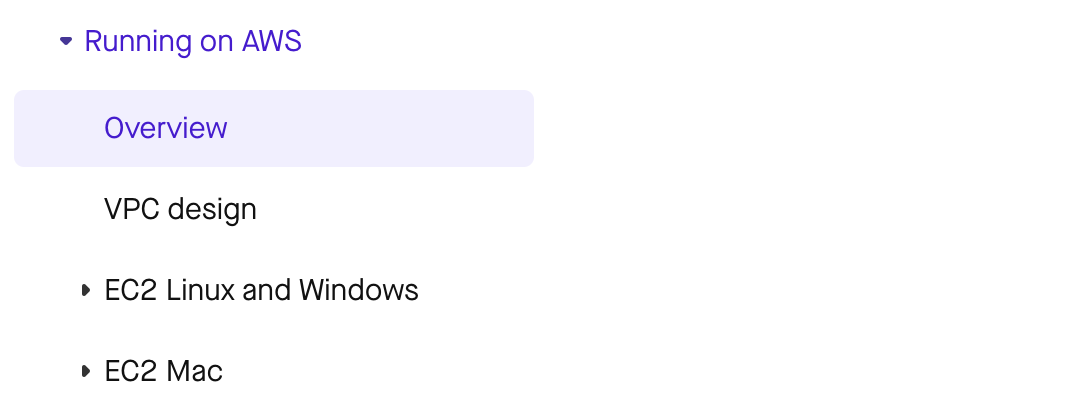
See the Overview to check out the changes. ✨
Michael
Now available: March 2023 release
We've just shipped new features that'll help uplevel your build and test workflows with Buildkite, including some key announcements:
Shaziya
Build UI improvements
We've updated the Build UI to be more intuitive with the following improvements:
- The
issuestab is called thefailurestab, making it easier for you to view failed jobs - The organization name and avatar are now seen on each Build page, to make it easier view the organization you're editing settings for
- Block steps within groups are now easier to identify in the UI with a thickened purple border
- Pipelines can be bookmarked instead of starred
- Build summary now has a rebuild option, rather than edit steps and new build options
- You can now navigate to all builds by clicking on the builds icon
- Spacing and font fixes
It's also easier to make your pipelines stand out with:
- Pipeline avatars in place of build stats
- Configuration of pipeline color and emoji through pipeline settings
Oz
Agent v3.45.0 and AWS Elastic Stack v5.18.0 release
The latest agent release includes the job-api experiment, which enables an HTTP API within the agent, allowing jobs to inspect and mutate their environment without using bash. This is a big step towards supporting hooks and plugins in other languages.
Other experimental features include:
- allowing spawning agents with a descending priority, rather than the default ascending priority
- artifacts can now be uploaded to S3 compatible endpoints such as MinIO.
Other updates to this release include:
- the AWS Elastic Stack has been updated with a newer version of buildx
- the managed secrets buckets created by the stack now have public ACLs explicitly blocked
For a full list of additions, changes, fixes, and more details, see the buildkite-agent changelog and the elastic-ci-stack-for-aws changelog on GitHub.
Narthana
Start turning complexity into an advantage
Create an account to get started for free.
